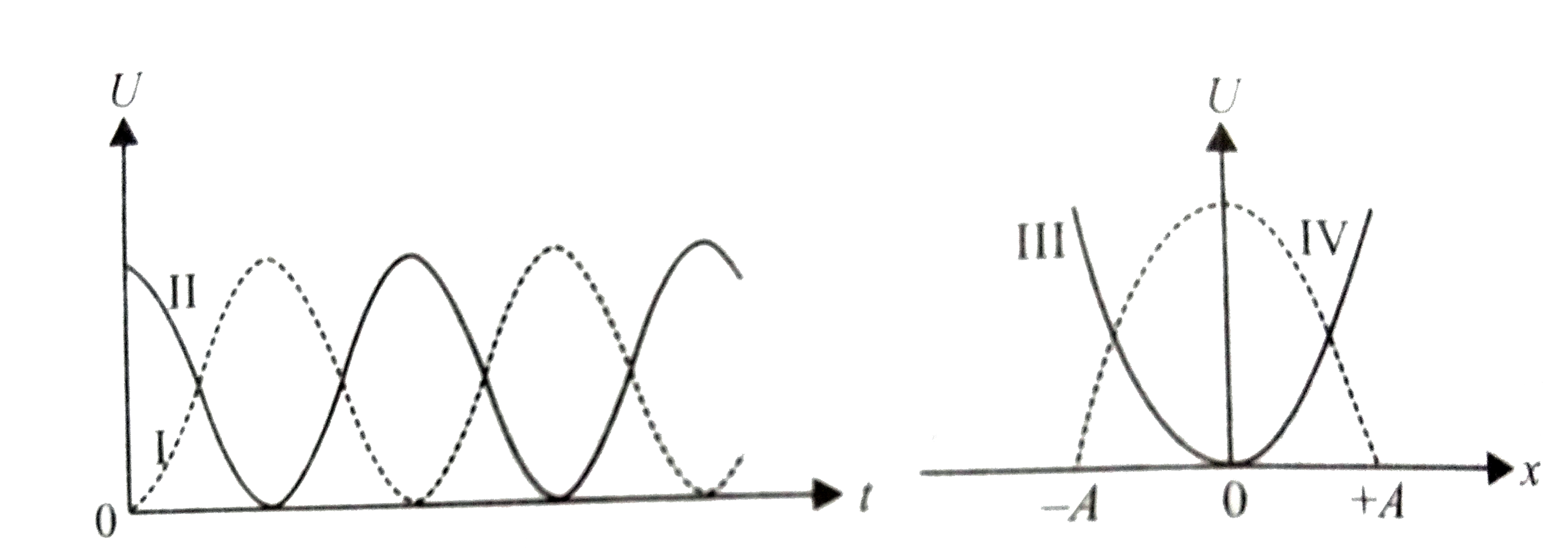For a particle executing simple harmonic motion represented by x(t)=Acos(ωt+φ) acceleration a(t) is given by .
a(t)=−2ω2x(t)
a(t)=−2ωx(t)
a(t)=−ωx(t)
a(t)=−ω2x(t)
To find the acceleration a(t) of a particle executing simple harmonic motion (SHM) represented by the equation x(t)=Acos(ωt+φ), we can follow these steps:
Step 1: Write down the displacement equation
The displacement of the particle in SHM is given by:
x(t)=Acos(ωt+φ)
where:
- A is the amplitude,
- ω is the angular frequency,
- t is the time,
- φ is the phase constant.
Step 2: Differentiate the displacement to find velocity
To find the velocity v(t), we differentiate the displacement x(t) with respect to time t:
v(t)=dxdt=ddt(Acos(ωt+φ))
Using the chain rule, we get:
v(t)=−Aωsin(ωt+φ)
Step 3: Differentiate the velocity to find acceleration
Now, we differentiate the velocity v(t) to find the acceleration a(t):
a(t)=dvdt=ddt(−Aωsin(ωt+φ))
Again, using the chain rule, we have:
a(t)=−Aω⋅ωcos(ωt+φ)=−Aω2cos(ωt+φ)
Step 4: Relate acceleration to displacement
Notice that the displacement x(t) can be substituted back into the equation:
a(t)=−ω2x(t)
Thus, we can express the acceleration in terms of displacement:
a(t)=−ω2x(t)
Final Result
The acceleration of the particle executing simple harmonic motion is given by:
a(t)=−ω2x(t)
The displacement of the particle in SHM is given by:
x(t)=Acos(ωt+φ)
where:
- A is the amplitude,
- ω is the angular frequency,
- t is the time,
- φ is the phase constant.
To find the velocity v(t), we differentiate the displacement x(t) with respect to time t:
v(t)=dxdt=ddt(Acos(ωt+φ))
Using the chain rule, we get:
v(t)=−Aωsin(ωt+φ)
Now, we differentiate the velocity v(t) to find the acceleration a(t):
a(t)=dvdt=ddt(−Aωsin(ωt+φ))
Again, using the chain rule, we have:
a(t)=−Aω⋅ωcos(ωt+φ)=−Aω2cos(ωt+φ)
Notice that the displacement x(t) can be substituted back into the equation:
a(t)=−ω2x(t)
Thus, we can express the acceleration in terms of displacement:
a(t)=−ω2x(t)
The acceleration of the particle executing simple harmonic motion is given by:
a(t)=−ω2x(t)
Similar Questions
Knowledge Check
- Question 1 - Select One
While a particle executes linear simple harmonic motion
Aits linear velocity and acceleration pass through their maximum and minimum values once in each oscillation.BIts linear velocity and acceleration pass through their maximum and minimum values twice in each oscillation.Cits linear velocity and acceleration pass through their maximum and minimum values four times in each oscillation.Dits linear velocity and acceleration always attain their peak values simlataneaously. - Question 2 - Select One
The velocity of a particle executing simple harmonic motion is
Aω2√A2+x2Bω√A2−x2Cω√A2+x2Dω2√A2−x2 - Question 3 - Select One
The epoch of a simple harmonic motion represented by x=√3sinωt+cosωtmis
A30∘B40.3∘C60∘D25∘
For a particle executing simple harmonic motion, the displacement x is given by x=Acosωt. Identify the graph, which represents the variation of potential energy (U) as a function of time t and displacement x.
 View Solution
View SolutionA particle executes simple harmonic motion represented by displacement function as
x(t)=Asin(ωt+ϕ)
If the position and velocity of the particle at t = 0 s are 2 cm and 2ω cm s−1 respectively, then its amplitude is x√2 cm where the value of x is _________.View SolutionIf a particle is executing simple harmonic motion, then acceleration of particle
View SolutionWhat is the phase difference between two simple harmonic motions represented by x1=Asin(ωt+π6) and x2=Acos(ωt)?
View SolutionA simple harmonic motion is represented by x(t)=sin2ωt−2cos2ωt. The angular frequency of oscillation is given by
View Solution
